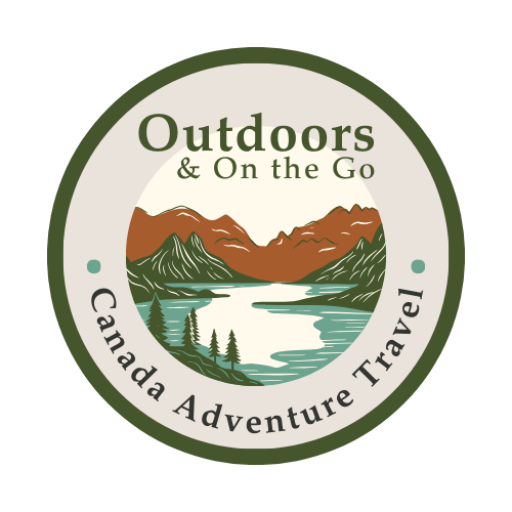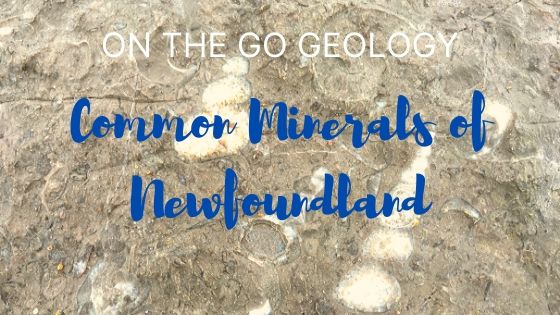Welcome to our new series of posts – all about geology! Emilie is our resident rock expert, kicking things off with Common Minerals of Newfoundland so you can begin learning about what you’re seeing while you’re out hiking and exploring. Take it away Emilie!
As a kid I loved rocks. I had a rock collection, of course, and even used my birthday money to buy a tacklebox where I could keep all my samples. I would organize them by color, and size, and by my own personal level of interest in them. That is, until the age of twelve when my parents bought me my first mineral identification book. A pocket guide, with color photos and protective plastic cover. I started organizing my samples by the types of minerals and chemical compositions. I read through that book so many times, learning about the minerals different properties, historical significance, and how to differentiate them.
That’s why, when I first heard about geology as a career, I was hooked. I decided at a young age that geology had to be my path in life. When I started my Minerals class in my second year of university, that little book from my youth had given me a huge head start.
Common Minerals of Newfoundland
Nowadays, I can’t help but consider the mineral compositions and structures that I see as I hike and explore the outdoors. I wanted to share a little bit of my geology knowledge with you. Here are some common minerals of newfoundland to watch for when you’re out in the wilderness.

Quartz
Quartz is often milky white, but can come in a variety of colors including purple (amethyst), yellow (citrine), grey (smoky quartz), pink (rose quartz) and many more. A quick way to test for quartz is with a pocket knife. On Mohs scale of hardness quartz is a 7, while a knife has a hardness of 5. This silica-rich mineral is so hard it will actually scratch your knife. You’ve heard of using flint to make sparks and light fires? Well, real flint, historically, is actually quartz! When you strike your knife against the flint, it’s really the knife that is sparking and making fires.
Quartz in Newfoundland
Quartz is often found in intrusive rocks, like granite, which can be found all over the island of Newfoundland. Intrusive rocks are prevalent in Central Newfoundland, but can also be found in the interior of Gros Morne National Park and throughout the Long Range Mountains.

Feldspar
Feldspar and quartz can often occur together, and can sometimes be difficult to distinguish. They have the same hardness (7), and are often similarly colored (white and pink varieties are common). So, how do you tell feldspar and quartz apart? Feldspar grows into rectangular crystals and breaks at 90 degree angles, while quartz crystals grow into pointed hexagonal shapes, and do not break at clean angles. Feldspar can also display some interesting physical features, like twinning and schiller. Schiller appears iridescent, resembling a gasoline sheen on the surface of a puddle, and is a common attribute of the mineral labradorite which is part of the feldspar family.
Feldspar in Newfoundland
Expect to see feldspars alongside quartz in the same intrusive rocks scattered across the island.

Mica
Micaceous minerals form sheet-like textures, layered one on top of the other. Dark brown/black mica is generally biotite, while silver-grey mica is generally muscovite. These flaky minerals have had some interesting uses in history. They are frequently used in construction materials like joint compound and paint. A purple mica variety, called lepidolite, is actually mined for the element lithium, while high quality mica is ground and added to cosmetics like blush and eyeshadow, providing a pearly lustre. Due to it’s interesting physical properties it is even used in medical equipment and radar. Check out the link below to read more about this useful mineral.
Mica in Newfoundland
Mica are commonly found in both intrusive and metamorphic rocks. These are rocks that have undergone intense heat and pressure. Newfoundland has a major rift zone, where the Earth spread apart and magma (molten rock) spilled out. As you can imagine, this rifting has an effect on the existing rocks in the area, so you can expect to see mica in or around rift zones. The Baie Verte area is a great place to check out these rift rocks. There are also some metamorphosed rocks in the Gander region, so if you find yourself in Gander take a gander at some mica!
Now you know some common minerals! Keep an eye out for them on the trails, and impress your friends with these fun facts! Also keep your eye on Outdoors and On the Go for more geology knowledge!
Want more geology?
If you need more geology in your life, be sure to check out Emilie’s articles on the Tablelands and Fossil Identification, as well as her Average Hiker podcast!
References & Further Reading
- https://geology.com/minerals/rock-forming-minerals/
- https://geology.com/minerals/muscovite.shtml
- https://www.gov.nl.ca/nr/files/mines-maps-nf.pdf

